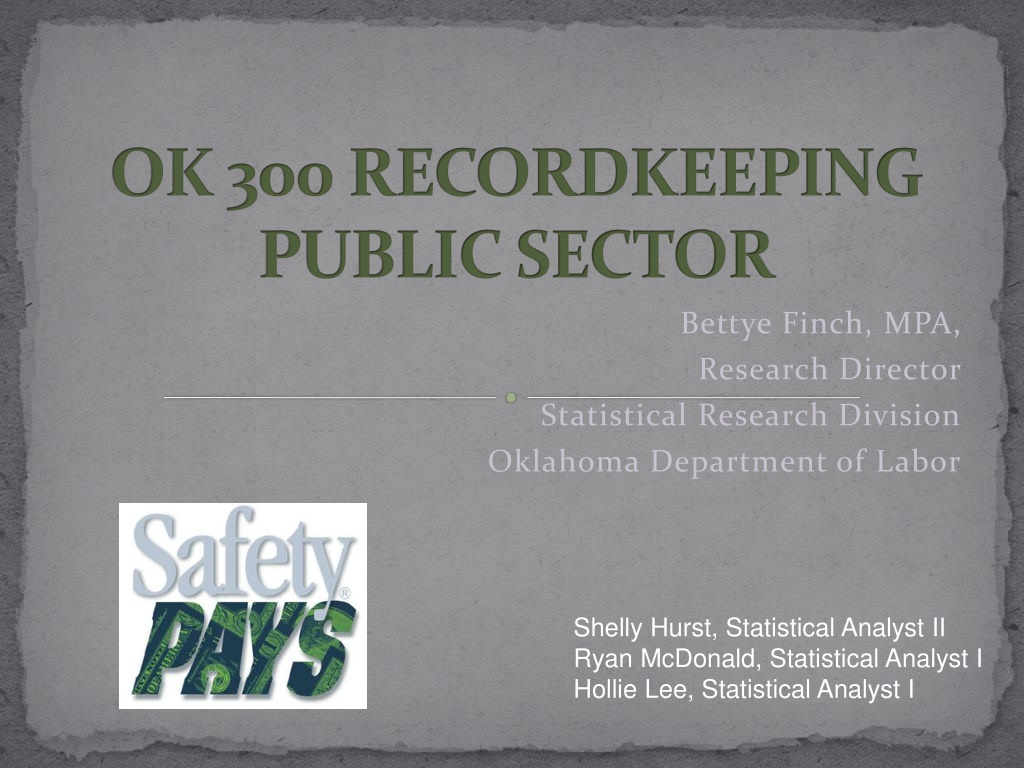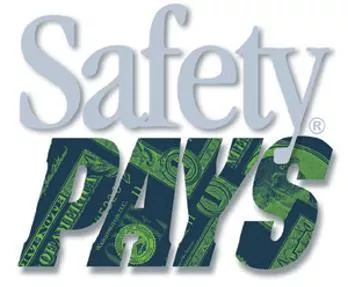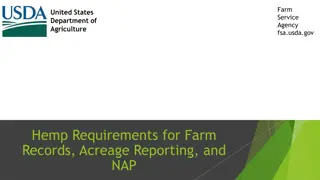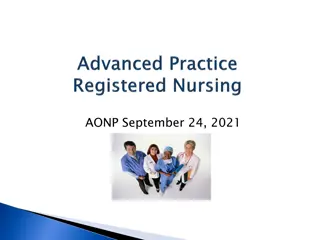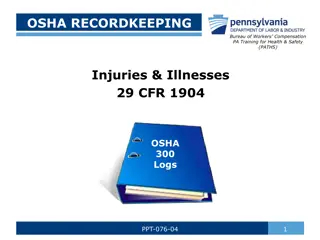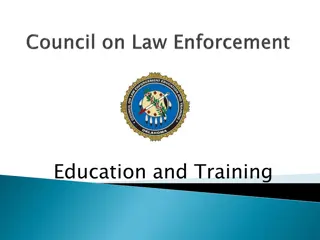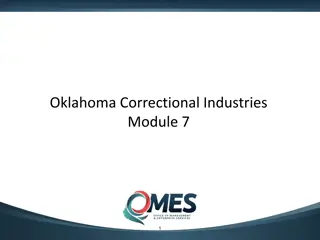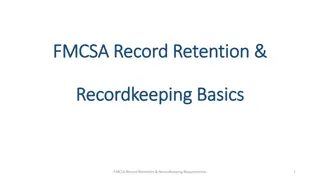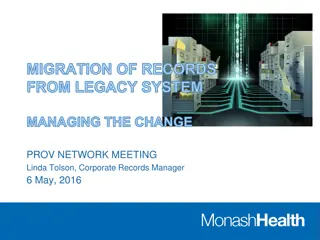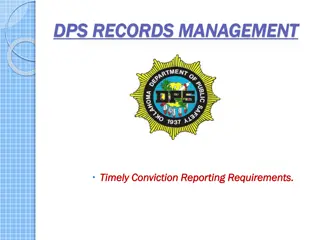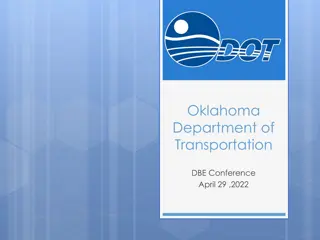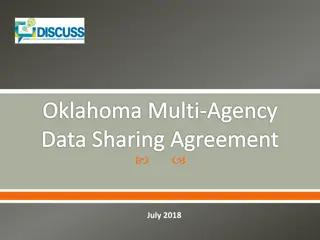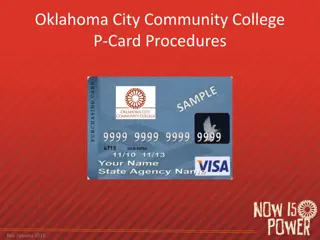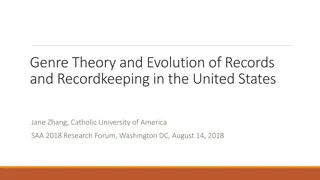Public Sector Recordkeeping in Oklahoma
This training module covers recordkeeping requirements for public sector organizations in Oklahoma, including who needs to keep records, understanding the regulations, and resources for assistance. It also delves into the specifics of 29 CFR 1904, the OSHA recordkeeping standard, and provides links to Oklahoma's recordkeeping forms and relevant statutes.
Download Presentation

Please find below an Image/Link to download the presentation.
The content on the website is provided AS IS for your information and personal use only. It may not be sold, licensed, or shared on other websites without obtaining consent from the author.If you encounter any issues during the download, it is possible that the publisher has removed the file from their server.
You are allowed to download the files provided on this website for personal or commercial use, subject to the condition that they are used lawfully. All files are the property of their respective owners.
The content on the website is provided AS IS for your information and personal use only. It may not be sold, licensed, or shared on other websites without obtaining consent from the author.
E N D
Presentation Transcript
OK 300 RECORDKEEPING PUBLIC SECTOR Bettye Finch, MPA, Research Director Statistical Research Division Oklahoma Department of Labor Shelly Hurst, Statistical Analyst II Ryan McDonald, Statistical Analyst I Hollie Lee, Statistical Analyst I
Objectives of Todays Training Identify who is required to keep records. Gain a basic understanding of the recordkeeping requirements. Know how and when to record a case. Identify resources to assist you in recordkeeping.
29 CFR 1904 Recording and Reporting Occupational Injuries & Illnesses Revised federal rule became effective January 1, 2002. Current revision of the OSHA forms were issued in 2004. Employers are required to maintain five (5) years of recordkeeping data available for review.
The Recordkeeping Standard: Is written in question and answer format Increased employer s options to use computers. Increased employee involvement. Protects employee privacy. Is available on-line at: www.osha.gov. OAC 380:40-1-5 adopts OSHA 29 CFR 1904
Oklahomas Recordkeeping Forms http://www.ok.gov/odol/documents/SR ALDPublicSectorSurvey2011InjuryIllness forms.xls http://www.ok.gov/odol/documents/SR ALDPublicSectorSurvey2011Booklet- FormsOnly.pdf
INTERNET SITES http://www.ok.gov/odol/documents /PEOSHAct.pdf http://www.ok.gov/odol/documents /PEOSHRuleBooklet2010.pdf
REMEMBER! OSHA and WORKER S COMP are two different and independent systems and one has no bearing upon the other!
Who is Required to Keep Logs? Title 40 Section 402(1) Title 40 Section 401 through 424 of Oklahoma Statute Title 40 was adopted as the Oklahoma Occupational Health and Safety Standards Act. Employer: Means the state and all its political subdivisions which has in its employ one or more individuals performing services for it in employment.
What is an employee? Title 40 Section 402 (2) Employee means a person permitted to work by an employer in employment.
Recording Criteria 1904.4 Fatalities, Injuries and Illnesses must be recorded when: It is work related, and It is a new case, and It meets the general recording criteria (1904.7 TO 1904.12)
Recording Criteria Decision Tree 1904.4 NO Did the employee experience an injury or illness? YES Is the injury or illness work-related? NO YES Update the previously recorded injury or illness entry if necessary. NO Is the injury or illness a new case? YES Does the injury or illness meet the general recording criteria or the application to specific cases? NO YES Do not record the injury or illness Record the injury or illness
Work-Relatedness 1904.5 Cases are work-related if an event or exposure in the work environment. Either caused or contributed to the resulting condition. Significantly aggravated a pre-existing injury or illness.
Work-Related Exceptions 1904.5(b)(2) Exceptions limit recording of cases involving: - The eating & drinking of food and beverages. - When the employee is present as a member of the general public or performing personal tasks while in the workplace outside assigned work hours. - Symptoms surface at work but are the result of a non-work related event or exposure. - Common colds or flu. - Personal grooming, self medication, or self inflicted. - Blood donations. - Exercise Programs. - Mental Illnesses.
Work Environment 1904.5(b)(1) The establishment and other locations where one or more employees are working or present as a condition of their employment.
General Recording Criteria 1904.7(b)(5) There is a specific list in the recordkeeping standard regarding what is first aid. If it s on the list, it is not recordable, no matter who provides the treatment. If a specific type of medical treatment is NOT on the list, is RECORDABLE.
Medical Treatment 1904.7(b)(5)(i) Medical Treatment means the management and care of a patient to combat disease or disorder. Medical treatment does not include: Visits to a PLHCP solely for observation or counseling. Diagnostic Procedures. First Aid.
First Aid 1904.7(b)(5)(ii) Using non-prescription medication at non-prescription strength. Tetanus immunizations. Cleaning, flushing, or soaking surface wounds on the skin. Wound coverings, butterfly bandages, steri-strips. Hot or cold therapy (regardless of the number of treatments.) Non-rigid means of support. Temporary immobilization devices used to transport an accident victim.
First Aid Continued Drilling of a fingernail or toenail, draining fluid from a blister. Eye patches. Removing splinters or foreign material - From areas other than the eye by irrigation, tweezers, cotton swabs or other simple means. - Removing foreign material from the eye by simple irrigation is considered first aid. Finger guards. Massage. Drinking fluids to relieve heat stress.
Prescription Strength Medication Ibuprophen (Advil) greater than 467 mg. Diphenhydramine (Benadryl) greater than 50 mg. Naproxen Sodium (Aleve) greater than 220 mg. Ketoprofen (Orudus KT) greater than 25 mg. To determine Rx strength for other medications, contact the FDA or any pharmacist or physician.
Recording You have seven (7) days from the date an injury or exposure is reported to determine if the injury or illness is recordable and get it entered onto the log and complete the 301 form. 1904.29(b)(3) Stop counting days when 180 calendar days (in any combination of days away and restricted duty) are reached. 1904.7(b)(3)(ii-ix)
Remember You never record a case on both year s logs. You never post the OSHA 300 Log! You must report any fatality or catastrophe (hospitalization of 3 or more workers) within 8 hours of the event. Post the Annual Summary (300 A) from February 1 to April 30. The Form 300 A must be certified by the highest ranking company official at the site.
Oklahoma Public Sector Incidence Rates 2011 2010 2009 2008 2007 2006 2005 2004 2003 2002 YEAR 4.7 5.0 5.3 5.1 5.4 5.1 5.6 5.7 6.4 6.5 TOTAL Incidence Rate STATE 3.4 3.4 3.8 3.7 3.9 3.4 4.1 4.0 4.8 4.5 5.6 6.0 6.2 6.1 6.3 6.3 6.6 6.8 7.3 7.6 LOCAL 10.8 12.1 11.4 11.3 12.5 12.4 12.1 11.3 11.7 12.8 CITY 4.7 5.2 5.6 5.9 5.8 5.7 6.4 6.5 7.6 7.4 COUNTY SCHOOLS 3.4 3.5 3.7 3.5 3.7 3.5 3.8 4.1 4.6 4.4 Source: Oklahoma Department of Labor, Statistical Research Division, Public Sector Survey.
You may contact me at: Oklahoma Department of Labor Statistical Research and Analysis Division 3017 North Stiles Suite 100 Oklahoma City, OK 73105 405-521-6855 405-521-6021 (fax) Toll Free 1-888-269-5353 Bettye.Finch@labor.ok.gov.
